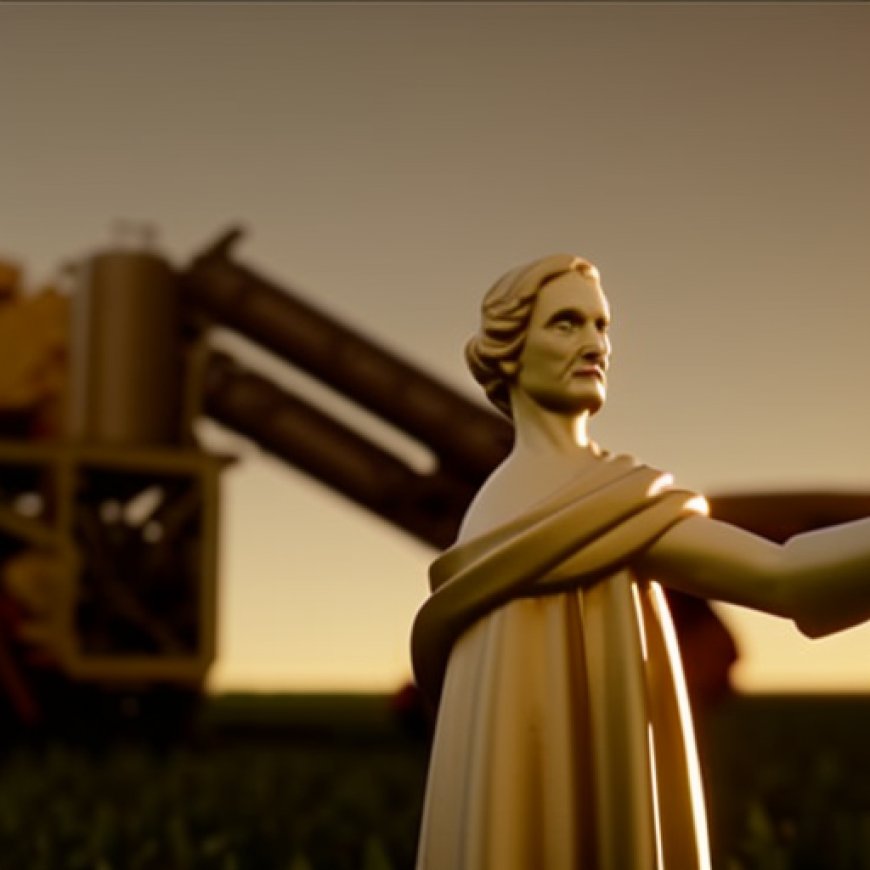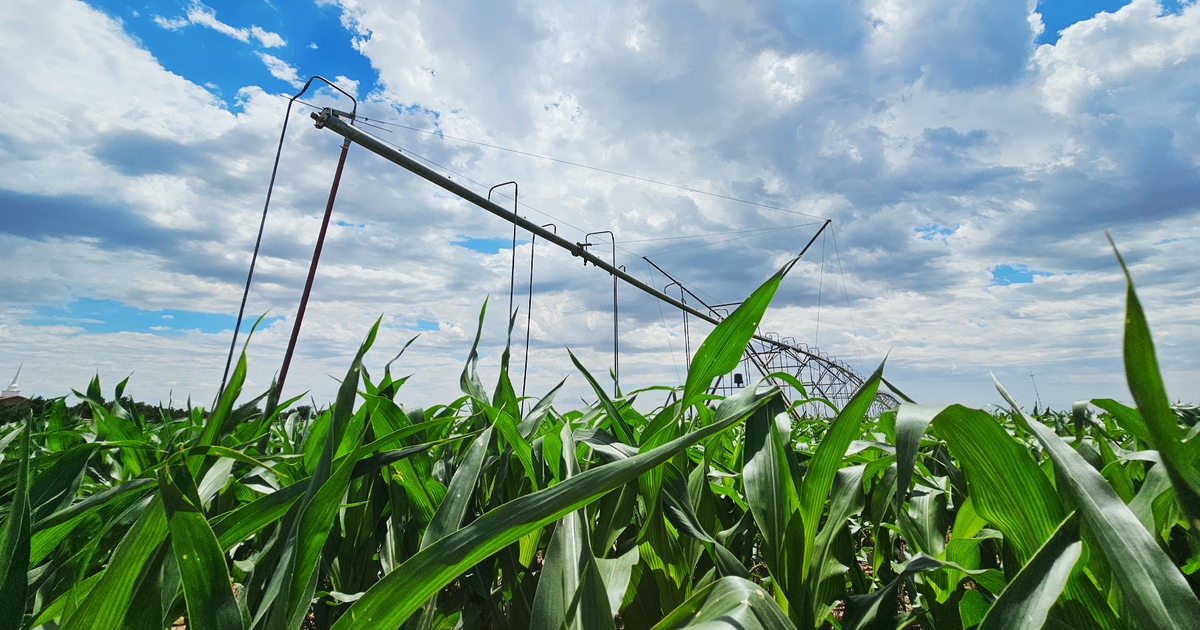Significant changes coming to Texas Right To Farm statute
Significant changes coming to Texas Right To Farm statute - Significant changes coming to Texas Right To Farm statute Farm Progress


Sustainable Development Goals (SDGs) and the Texas Right to Farm Statute Amendments

Introduction
The Texas Right to Farm statute is undergoing significant changes as of September 1, 2023. The amendments, including HB 1750, HB 2308, and HB 2947, aim to provide crucial protections to rural landowners, lessees, and agricultural operators in Texas. A document containing the text of the revised Texas Right to Farm Statute as of September 1 can be found here.
Background
The Texas Right to Farm statute was initially passed in 1981. All 50 states have some version of a Right to Farm law, which primarily aims to protect agricultural operations from nuisance actions. A compilation of these laws can be found here.
The Texas law serves two purposes: (1) providing a defense for agricultural operations facing nuisance or similar lawsuits, and (2) prohibiting cities or political subdivisions from imposing certain regulations or requirements on agricultural operations.
Statutory Amendments – Lawsuits
HB 1750 and HB 2308 introduced several modifications to the portion of the statute that protects agricultural operations from lawsuits.
- Broadened protection beyond nuisance suits.
The revised language of the statute now extends its protection not only to nuisance lawsuits but also to “other actions to restrain” agricultural operations. This clarification aligns with the common law interpretation of the Right to Farm defense.
Expands definition of “agricultural operation” to expressly include vegetation, forage, veterinary services, and commercial animal sales.
The definition of “agricultural operation” has been expanded to explicitly include operations involved in growing vegetation, providing forage for livestock or wildlife management, offering veterinary services, and engaging in the commercial sale of livestock, poultry, and other domestic or wild animals. This amendment ensures that veterinary practices are considered “agricultural operations” protected by the Right to Farm statute.
Modified definition of “established date of operation” and “substantial change.”
The definition of “established date of operation” is critical to the Texas Right to Farm statute, both in terms of nuisance and regulations/requirements. The amended statute establishes that the established date of operation is the date on which agricultural operations commenced. Previously, each expansion of physical facilities would result in a new established date of operation. The revised law provides clarity by assigning one clear date of commencement for every facility.
The statute prohibits lawsuits against an agricultural operation that has lawfully been in operation “substantially unchanged” for one year or more from the established date of operation. The revised statute introduces a new definition of “substantially unchanged,” which refers to a material alteration to the operation or type of production that is substantially inconsistent with the operational practices since the established date of operation. The application of this definition may require further litigation to establish its precise interpretation.
Imposed higher burden of proof requirement on non-Right to Farm Act cases.
The revised statute now requires individuals bringing nuisance claims or other actions against an agricultural operation, not protected by the Right to Farm statute, to prove each element by clear and convincing evidence. This higher standard of proof provides some protection to defendants in situations where the Right to Farm law may not be applicable.
Maintained right of state or political subdivisions to enforce state law.
Both the amended and prior versions of the Act state that nothing in the statute limits the right of a state or political subdivision to enforce state law. The revised statute removes the previous limitation related to laws necessary for protecting public health, safety, and welfare, allowing for the enforcement of all state laws, including actions by the Texas Commission on Environmental Quality (TCEQ).
Clarified scope of potential damages.
The revised statute explicitly states that if a plaintiff brings an action against an agricultural operation that has existed substantially unchanged for a year or more, the defendant may recover attorney’s fees, court costs, travel expenses, and “any other damages found by the trier of fact.” This clarification ensures that all relevant damages are considered.
Addressed conflicts with other laws.
The statute establishes that its provisions prevail in case of conflicts with any other law.
Statutory Amendments – Regulations/Requirements
HB 2308 and HB 1750 made significant changes to the provisions concerning regulations and requirements imposed by political subdivisions on agricultural operations.
- Further limited city requirements on agricultural operations.
The Right to Farm Act has always limited the applicability of certain requirements on agricultural operations. For political subdivisions other than cities, the requirements apply to operations with an established date of operation subsequent to the effective date of the requirement. However, operations with established dates of operation prior to the effective date of the requirement are exempt. The modification of the established date of operation discussed earlier will significantly impact this section as well.
For cities, different requirements apply. City requirements do not apply to agricultural operations outside the city’s bounds. Within the corporate bounds of a city, the statute now significantly limits when a city can impose requirements on an agricultural operation. A city may only impose a requirement if it complies with the rules set forth in Section 251.0055.
Section 251.0055 outlines specific circumstances where a city can impose requirements on agricultural operations within its bounds. These circumstances include imminent danger of explosion, flooding, vermin or insect infestation, physical injury, spread of contagious diseases directly attributable to the agricultural operation, removal of lateral or subjacent support, contamination of water supplies, radiation, traffic hazards caused by crops or vegetation, or discharge of firearms in violation of the law. If a requirement falls within these categories, the city must pass a resolution based on a mandatory report stating that the requirement is necessary to protect public health.
There are additional limitations imposed as well:
- A city may not prohibit the use of generally accepted management practices listed in a manual prepared by Texas A&M AgriLife Extension, unless it meets specific requirements.
- A city may not restrict the
SDGs, Targets, and Indicators
SDGs Targets Indicators SDG 2: Zero Hunger Target 2.4: Sustainable food production systems – No specific indicators mentioned in the article SDG 11: Sustainable Cities and Communities Target 11.3: Access to green and public spaces – No specific indicators mentioned in the article SDG 15: Life on Land Target 15.1: Conservation and restoration of ecosystems – No specific indicators mentioned in the article 1. Which SDGs are addressed or connected to the issues highlighted in the article?
SDG 2: Zero Hunger
The issues highlighted in the article are related to agricultural operations and the protection of rural landowners and agricultural operators. SDG 2 aims to end hunger, achieve food security, improve nutrition, and promote sustainable agriculture. The article discusses the Texas Right to Farm statute, which offers important protections to agricultural operators, aligning with the goal of sustainable agriculture.
SDG 11: Sustainable Cities and Communities
The article mentions the prohibition of cities or political subdivisions from imposing certain regulations or requirements on agricultural operations. This relates to SDG 11, which focuses on making cities inclusive, safe, resilient, and sustainable. The article highlights the limitations on city requirements for agricultural operations within their bounds, ensuring the protection of agricultural activities in urban areas.
SDG 15: Life on Land
The article discusses the Texas Right to Farm statute’s purpose of protecting agricultural operations from nuisance actions. This aligns with SDG 15, which aims to protect, restore, and promote sustainable use of terrestrial ecosystems, sustainably manage forests, combat desertification, halt and reverse land degradation, and halt biodiversity loss.
2. What specific targets under those SDGs can be identified based on the article’s content?
Target 2.4: Sustainable food production systems
The article does not specifically mention this target, but it is relevant as the Texas Right to Farm statute provides protections to agricultural operations, ensuring their sustainability and promoting sustainable food production systems.
Target 11.3: Access to green and public spaces
The article does not directly address this target, but it indirectly relates to it by discussing the limitations on city requirements for agricultural operations. By protecting agricultural activities within city bounds, access to green spaces and agricultural land is maintained.
Target 15.1: Conservation and restoration of ecosystems
The article does not explicitly mention this target, but it is connected as the Texas Right to Farm statute aims to protect agricultural operations from nuisance actions, contributing to the conservation and preservation of ecosystems.
3. Are there any indicators mentioned or implied in the article that can be used to measure progress towards the identified targets?
No specific indicators are mentioned or implied in the article that can be used to measure progress towards the identified targets. The article primarily discusses amendments to the Texas Right to Farm statute and the protections it offers to agricultural operators, without providing specific indicators for measuring progress.
4. SDGs, Targets, and Indicators
SDGs Targets Indicators SDG 2: Zero Hunger Target 2.4: Sustainable food production systems No specific indicators mentioned in the article SDG 11: Sustainable Cities and Communities Target 11.3: Access to green and public spaces No specific indicators mentioned in the article SDG 15: Life on Land Target 15.1: Conservation and restoration of ecosystems No specific indicators mentioned in the article Behold! This splendid article springs forth from the wellspring of knowledge, shaped by a wondrous proprietary AI technology that delved into a vast ocean of data, illuminating the path towards the Sustainable Development Goals. Remember that all rights are reserved by SDG Investors LLC, empowering us to champion progress together.
Source: farmprogress.com

Join us, as fellow seekers of change, on a transformative journey at https://sdgtalks.ai/welcome, where you can become a member and actively contribute to shaping a brighter future.







